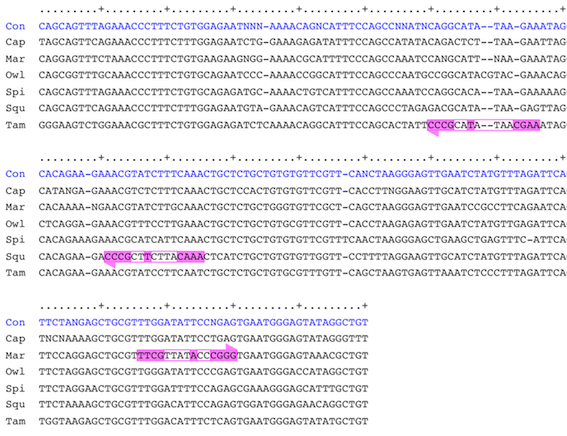



|
TOPICS BONOBO Chimpanzee "Ai" Crania photos Itani Jun'ichiro archives Open datasets for behavioral analysis Guidelines for Care and Use of Nonhuman Primates(pdf) Study material catalogue/database Guideline for field research of non-human primates 2019(pdf) Primate Genome DB 
Primate Research Institute, Kyoto University Copyright (c) |
Japanese Formation of functional CENP-B boxes at diverse locations in repeat units of centromeric DNA in New World monkeys
Kugou K, Hirai H, *Masumoto H, *Koga A
Abstract
Centromere protein B, which is involved in centromere formation, binds to centromeric repetitive DNA by recognizing a nucleotide motif called the CENP-B box. Humans have large numbers of CENP-B boxes in the centromeric repetitive DNA of their autosomes and X chromosome. The current understanding is that these CENP-B boxes are located at identical positions in the repeat units of centromeric DNA. Great apes also have CENP-B boxes in locations that are identical to humans. The purpose of the present study was to examine the location of CENP-B box in New World monkeys. We recently identified CENP-B box in one species of New World monkeys (marmosets). In this study, we found functional CENP-B boxes in CENP-A-assembled repeat units of centromeric DNA in 2 additional New World monkeys (squirrel monkeys and tamarins) by immunostaining and ChIP-qPCR analyses. The locations of the 3 CENP-B boxes in the repeat units differed from one another. The repeat unit size of centromeric DNA of New World monkeys (340-350 bp) is approximately twice that of humans and great apes (171 bp). This might be, associated with higher-order repeat structures of centromeric DNA, a factor for the observed variation in the CENP-B box location in New World monkeys.  2016/06/17 Primate Research Institute
|